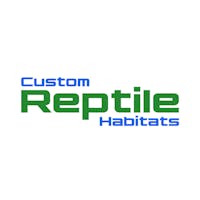
The Leopard Gecko (Eublepharis macularius) is a medium sized, ground dwelling gecko that is native to the semi-desert and arid grasslands of Iran, Afghanistan, Pakistan and India. Today, Leopard Geckos are likely the most popular pet gecko in the USA and Europe partly due to their ease of care combined with their unique personalities.
Lighting: There is a common myth that because leopard geckos are “nocturnal,” they don’t need any light at all to see or function, and providing light will burn their eyes. This is a myth!
Leopard geckos are crepuscular, which means that they most active at dawn/dusk. While their eyes evolved for low light conditions, and they tend to be much more active during the night than during the day, this does not mean that they do not need lighting as part of their enclosure setup.
In fact, having a light on in the enclosure helps regulate their day/night cycle, which is good for their mental health and stimulates appetite. According to the UV Tool by Frances Baines, light should be provided for 14 hours/day during the summer, which simulates their optimal photoperiod. To simulate the change of the seasons, reduce the amount of light to 12 hours during winter.
Daytime light is also nice for viewing; occasionally leopard geckos will come out during the day to bask. This is not unusual — many nocturnal species have been observed basking, especially in the morning.
What about UVB?
Many leopard gecko keepers will tell you that leopard geckos “don’t need UVB.” This is partially true. Since they are most active when the sun is either weak or not present, they are not as dependent on UVA and UVB as diurnal species. However, mounting scientific evidence is proving this assumption incorrect and outdated — when offered, leopard geckos and other nocturnal species will bask under and benefit from UVB lighting.
- For normal morph (“wild type”) and other well-pigmented leopard geckos, a Zoo Med Reptisun T5 HO 5.0 or Arcadia ShadeDweller 7% fluorescent tube should be used. If using a Solarmeter 6.5, aim for a UV Index between 0.5 – 1.5* at most.
- Albino, patternless, and other less-pigmented morphs of leopard gecko are more sensitive to (and can be burned by) excess UVB. For them, use a weaker Zoo Med Reptisun T8 5.0 or Arcadia T8 6% to achieve the same benefit. If using a Solarmeter 6.5, aim for a UV Index of no more than 0.5 – 0.7* at most.
*UVI measurements are per recommendations from Frances Baines, D.V.M.
Temperature: Leopard geckos, like all reptiles, need a temperature gradient in their terrarium for best health.
- Basking surface temperature:88-91°F (31-33°C)
- General surface temperature:75-85°F (23-29°C)
- General air temperature:77-85°F (25-29°C)
- Cool end:no lower than 70°F (21°C)
Do not let air temps rise above 92°F/33°C! Even though leopard geckos are perceived as desert animals, they are not tolerant of extreme heat and can die of heat stroke if they do not have a cool place to escape.
What is the best way to heat a leopard gecko enclosure?
Heat lamps: In nature, warmth is delivered to reptiles from the sun (above), and they will retreat underground to get cooler, not warmer. Heat lamps supply heat in a way that works with a leopard gecko’s instincts, replicating nature in captivity.
Heat mats: Heat mats were the most popular way to heat a leopard gecko enclosure — it’s outdated now that we know there are better options. If you choose to use a heat mat anyway, know that they only work when they are controlled by a thermostat. Heat rocks and non-thermostat-controlled heat mats run the risk of burning your gecko, so don’t risk it.
Humidity: Leopard geckos are desert animals, so they need a fairly dry environment to stay healthy. Ideal humidity will be between 30%-40%, which should match the humidity naturally in your home. Leopard Geckos do need higher humidity for shedding. In fact, shedding problems are the #1 most common health problem experienced with leopard geckos so be sure to provide a humid hide stuffed full of moist sphagnum moss and placed on the warm side of the enclosure. The humid hide should provide humidity levels between 70-80%.
Feeding: Leopard geckos are insectivores, which means that they eat bugs. No vegetables, fruit, or meat – they’re just crazy for bugs! It’s easy to remember how much to feed your gecko: Offer 2 appropriately-sized bugs per 1 inch of your leopard gecko’s length, or however much they can eat in 15 minutes. Juveniles should be fed daily, and young adults fed every other day/every 3 days. Adults whose tail is fatter than their neck can be fed every 5 days.
Water: Leopard geckos readily drink water from a dish, so fresh water must be available.
Supplements: All insect feeders should be dusted with calcium powder. If you’re not using a UVB light, be sure to use a supplement that includes vitamin D3 to prevent Metabolic Bone Disease. Dust insects with a multivitamin powder once a week for young geckos and once every other week for adult geckos.
Important: This basic information was compiled with permission from ReptiFiles.com. Be sure to bookmark, reference and read ReptiFiles for the complete care for your Leopard Gecko.




